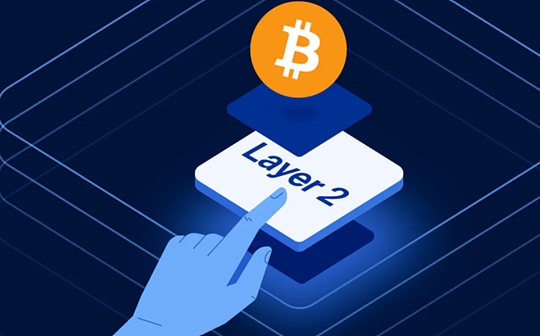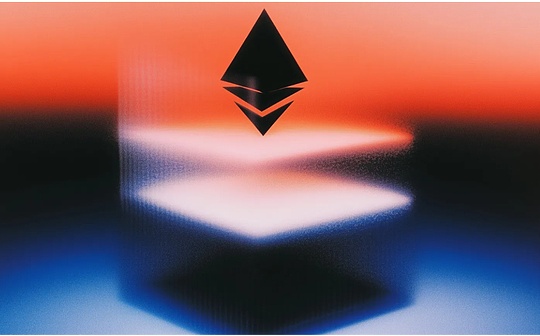
Author: jolestar Source: X, @jolestar
Recently, Bitcoin Magazine’s definition of Bitcoin L2 has caused debate on what Bitcoin L2 is, and this issue has also been debated in the Ethereum community.So how do you define L2?We can analyze it from the perspectives of technology and ecology. I advocate a L2 from an inclusive perspective.
The technical perspective definition of L2
If you want to define L2 technically, the key is to make it obvious that it is different from L1 and the centralized solution.I think there are two key points:
1. L2 does not create new block space.Technical solutions to create new block spaces are essentially L1.
2. L2 Use L1 to enable data availability and security.Technical solutions to create new block spaces are essentially L1.
But obviously, the market is not defined from a technical perspective, but more from an ecological perspective.
The ecological perspective definition of L2
When defining L2 from an ecological perspective, we focus on how L2 utilizes or inherits the capabilities provided by L1.Let’s take Bitcoin as an example to analyze what inheritance and extension directions are available on Bitcoin.
BTC Assets
This is a story that all L2 is telling, how to create additional usage scenarios for trillion-scale BTC assets, whether it is transactions or pledges, there is a lot of room for imagination.It takes a bridge to trade assets of one blockchain system into another system, and the key issue here is how to make users trust this bridge and ensure the security of assets.
From this perspective, all solutions that create usage scenarios for BTC assets through bridges can be understood as Bitcoin L2.Even BTC ETFs can be understood as Bitcoin’s L2, which is a fully centralized hosting bridge that ensures security through legal supervision.So what everyone is worried about is not the issue of decentralization, but the issue of trust.Decentralized solutions can reduce the trust costs of users and bring opportunities to new projects, but how to construct a secure decentralized bridge on Bitcoin is a key problem. Can L2 use other features of Bitcoin to improve this bridgeSecurity.
In addition, with the development of expansion protocols on Bitcoin, whether it is Ordinals, extension protocols on Ordinals (BRC20, etc.), Atomicals, RGB, Taproot assets, etc., there will be more and more new assets on Bitcoin. How to make this bridgeIt is also a huge challenge to be scalable and able to quickly support new asset types.
Bitcoin Block Space
As the most decentralized blockchain network, Bitcoin has not fully utilized its value in block space.And this wave of Ordinals inscription fever can be understood as the value discovery of Bitcoin as the data availability layer (DA).The Ordinals protocol defines an extensible data format standard, allowing a unified solution to parse, display, and exchange data engraved on Bitcoin.
The extension protocol on Bitcoin and L2, how to fully utilize Bitcoin’s block space is an exploration direction.
Programmable capabilities of Bitcoin networks
Bitcoin Script has limited programming capabilities, and its programming capabilities for assets are mainly manifested in three types of locks: time lock, Hash lock, and private key lock.Taproot allows Bitcoin Script to be more complex, so there is a possibility of a solution like bitvm.But the key challenge in this aspect is that Bitcoin Script is stateless. It cannot read the state of Bitcoin and the accumulated state, and can only rely on input. Whether it can use Bitcoin scripts to achieve arbitration is still a direction to be explored..
Another angle is innovation in cryptography, including a protocol that constructs game mechanisms based on key exchange to ensure security, such as Lightning Network.There is also Babylon’s “extractable one-time signature”, which, although the implementation details have not been announced yet, are already very much looking forward to.
Bitcoin’s status
Bitcoin’s status includes the following:
1. Bitcoin timestamp
2. Bitcoin’s block nonce random number
3. Bitcoin’s UTXO, and ownership of UTXO
4. Bitcoin’s blocks, and new assets and information attached to UTXO
Then we can analyze the different Bitcoin extension protocols and how L2 projects extend Bitcoin through the above perspective.
How to expand Bitcoin
Bridge + Programmable Environment
Given the limited programming capabilities of Bitcoin itself, one approach is to transfer Bitcoin assets to environments with stronger programmability, such as EVM, thereby opening up new application scenarios for Bitcoin assets.Representatives in this regard are BEVM and Merlin. The key lies in the design of the bridge: 1. Whether L2 can take advantage of the security provided by L1.2. Scalability of cross-chain solutions.
Extend a smart contract layer on Bitcoin
RGB utilizes Bitcoin’s UTXO’s feature that can only be used once to achieve one-time sealing, and also uses Bitcoin’s block space to announce transaction commitments, providing an Offchain programming environment.Its advantage is that it completely matches the UTXO model, does not rely on global state, and ensures privacy, but this is also its disadvantage, limiting its programming scenarios.In this direction, CKB’s RGB++ makes trade-offs on the characteristics of RGB and provides a richer programming model through the cell model.
Offchain calculations for Indexer mode
The inscription Indexer pattern can be understood as an Offchain calculation model. The assets are defined on the chain, and the legitimacy is guaranteed by off-chain calculations, and can provide global state.The inscription can be understood as an asset between L1 and L2. If the protocol has built-in migration mechanism between L1 and L2, the circulation of assets between L1 and L2 can be achieved.If the generation and verification logic of inscription assets are inscribed on Bitcoin through code, it is also an extension of Bitcoin programming capabilities, such as bitseed.
Stackable L2 (stackable L2)
If the Indexer that implements Bitcoin’s extended protocol through smart contracts, parses all UTXOs and additional states on Bitcoin in Indexer, and allows developers to deploy and apply them to Indexer through smart contracts, it is equivalent to providing Bitcoin with a newSmart contract layer, this is Rooch’s solution.
Previously, I called this model smart Indexer, but the concept of Indexer gives people the feeling that it is read-only, so I used a new word “Stackable L2”, which refers to all extension solutions that contain the full state of L1 in L2, which is completely inherited.All states of L1 are found.In this case, the application of L2 can read all states on L1 and create a new state. The assets of L1 and L2 can form new assets through stacking combinations.The security of L2 can be guaranteed through a modular solution.Let’s write a detailed description of this concept later.
The above solutions can actually be coordinated with each other through a combination mode.
L2 from an inclusive perspective
If we put aside the specific implementation method and abstractly understand L2, we will find that it should be a continuous spectrum, from the leftmost CEX to the rightmost L1, the middle-range solution can be included in this spectral range..Both ends of this spectrum also represent two different growth patterns.CEX is basically a fully product-oriented and user-oriented growth method, while L1 has a relatively long construction cycle, which prioritizes narrative and blueprints, while L2 is in the middle, which will be a hybrid growth model.
Taking an inclusive perspective, we don’t need to worry too much about what is “real L2”.Various technologies and solutions created by the industry, Validium, Plasma, Sovereign rollup, Op/Zk rollup, Modular Execution layer, Decentralized compute, side chain, L2/L3, etc., should be regarded as part of this spectrum, and the industry should be treated as part of this spectrum through variousThis arrangement and combination method explores the infrastructure required by new applications.
Different projects have different assumptions about new applications, which also determines its combination and growth mode. It may be L1 a little left or CEX a little right.The future is uncertain. It is difficult to assert that model will grow at this stage, but one thing is certain. After so many years of exploration, the industry has a L1 in scale and a CEX in scale, and it also needs to have a CEX in scale.The intermediate layer fills this gully.








